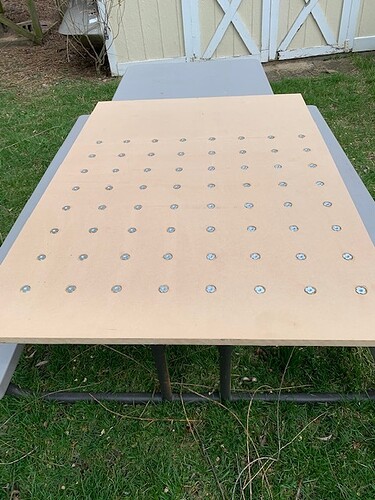I did it in FreeCad 0.19 nightly. Used a 1/4"circular path profile cut on the inside with a 1/8" 2-flute bit. After the grid was cut, I removed the board. Drilled through the board through each of the cnc holes with a 9/32" bit which is JUST large enough for the tee-nut. After that, I flipped it over and used a 7/8" spade bit to sink a (roughly) 1/8" pocket for the anchors to be flush. Final step was to lug it back inside and reinstall on the table.
Total time was around 2 hours.
Anchors away! (note: I live just north of the Great Lakes Naval Training Station
I plan to do a surfacing pass tomorrow then an alignment grid after that (just a grid of lines 2mm deep with a 2mm cutter.)
